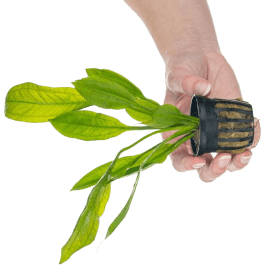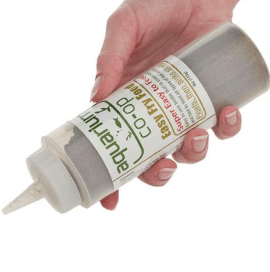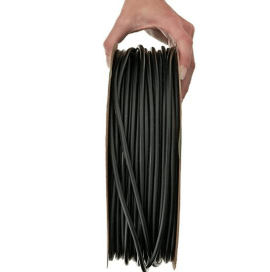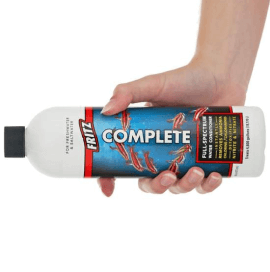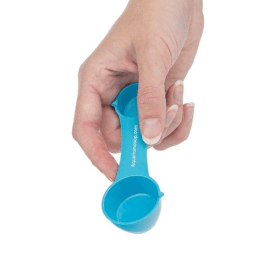How to Choose Aquarium Plants
It’s no secret that live plants can provide many benefits to your fish, invertebrates, and the overall health of your aquarium. Plants can help consume harmful waste compounds, provide hiding spaces, and create the aesthetic appeal of bringing a slice of nature indoors.
Choosing plants to create your planted tank is very personal. There are a lot of factors that can impact your choice beyond the aesthetic appearance of your aquarium. With so many plants available to us as modern-day hobbyists, it can be an overwhelming task to decide which plants are right for your tank. This checklist will help walk you through the different aspects of choosing plants that will grow successfully in your aquarium, and that you will enjoy looking at and caring for.
Size
Paying attention to the size your aquarium plants will reach at maturity can help prevent your aquarium from looking too sparse, or too overgrown. A mature Amazon sword (Echinodorus amazonicus) can quickly reach between 12 and 20 inches tall, so this particular plant may be better suited for taller, larger aquariums. In contrast, the mature size of a cryptocoryne parva is around 2-3” in height, and with a slow growth rate, which makes it excellent for smaller aquariums, and to prevent overgrowth in spots that may be difficult to trim.

Cryptocoryne parva
When you purchase plants from Aquarium Co-Op, you can sort plants on our website by size to make this decision-making process easier. The smallest plants will fall into the foreground category, while medium plants will show up in the midground section, and the largest plants will be categorized as background plants. For tanks with the available space, choosing a variety from each category can give your aquascape a more natural appeal.
Lighting and CO2
The strength of your lighting, and whether or not you choose to supplement with CO2, can also impact your plant choice. Our recommendation for beginners is to start with low light requirement plants, these are going to be the most forgiving when it comes to finding a good balance and routine while you are learning how to keep a planted tank for the first time. Medium light requirement plants can be kept with good success if you are new to planted aquariums, however they may begin to struggle if you need to turn lighting down to help control algae growth. There is a bit more risk involved when choosing medium light requirement plants while you are still learning, but it is certainly not an impossible task for a beginner to take on. For those that are more experienced, high light requirement plants that need CO2 to thrive can provide an interesting and aesthetically pleasing challenge. You do not need to supplement your aquarium with CO2 to have a thriving, beautiful planted aquarium, it just allows you to keep certain types of plants that are a bit more demanding when it comes to lighting and nutrients.

Example of high lighting on a CO2-injected aquarium
If you would like to learn more about balancing lighting in your aquarium, this article here expands upon that topic in greater detail. This article here discusses lighting brightness, and photosynthetic active radiation, or PAR, which is a measurement of how effective light is at growing plants.
Fertilizer and Maintenance Routine
If you prefer to fertilize and perform maintenance sparingly, or maybe you have a very busy schedule, you might be the perfect candidate for low light/low fertilizer requirement plants with slow growth rates, such as anubias, crypts, and ferns. These plants offer plenty of variety in size, texture, and color, while keeping your maintenance routine simple and enjoyable. Low nutrient and lighting requirement plants will typically do well with a once or twice weekly dose of an all-in-one fertilizer like Easy Green, with the occasional supplement of Easy Potassium.

Nano Easy Green bottle next to a small low-light betta tank
For hobbyists who want to be involved with their tank on a more frequent basis, and enjoy more of a challenge, you might opt for medium to high light plants. Plants with faster growth rates, such as stem plants, will be much more demanding when it comes to fertilizer needs. In some cases, densely planted tanks with high demand stem plants will require daily fertilizer dosing, and may require supplemental iron fertilizer such as Easy Iron. Stem plants can be great for controlling high nitrates in heavily stocked tanks due to their fast growth, and there are plenty of options that can thrive in lower lighting. Fast-growing plants will also require more frequent trimming, which can make it easy to fill in lots of space very quickly, but it can also cause your tank to get overgrown if there is a pause in maintenance. Other plants that will have higher fertilizer needs include bulb plants and swords, which do best when provided with root tabs on a regular basis. These plants may start showing signs of nutrient deficiencies if you skip more than one dose of fertilizer in a row, and inconsistent fertilizer dosing can sometimes invite algae in.

Adding Easy Potassium using the easy dosing cap
To learn more about fertilizing aquarium plants, check out this article here.
Work With Your Water
It’s true that it can be more challenging to grow some aquarium plants with high pH (above 7.8) and very hard water. This is because higher pH means there is going to be less dissolved CO2 in the water column, which can slow plant growth and make it difficult to keep algae at bay. Some people solve this problem by supplementing CO2, or using reverse osmosis (RO) water to help reduce the pH and hardness. CO2 is a vital macronutrient that plants need to grow, so if your tank is starting out with low CO2 due to high pH, the best way to keep a planted aquarium without chasing pH, using RO water, or adding CO2 supplementation, is to keep lower light requirement plants that can and will thrive in this type of environment.
On the other end of the spectrum, low pH (below 6.5) and very soft water can cause plants to develop nutrient deficiencies very quickly. Plants need minerals such as calcium and magnesium to maintain healthy growth, and very soft water tends to lack these minerals. Low pH can also be hard on some species of fish, and keeping pH at or above 7.0 can help prevent pH-related issues. This problem can be easily solved with the addition of a mineral supplement such as our Easy Shrimp and Snail Shells, which provide calcium and magnesium, or crushed coral, which helps buffer pH up in addition to providing vital minerals.

Testing water with the Aquarium Co-Op Multi-Test Strips
If you haven’t tested your water to find out your pH, GH, and KH yet, you can do so using a water test kit such as these Multi-Test Strips. Regular testing can help ensure your aquarium is in good health, and can let you know when a water change is needed.
You can read more about the relationship between pH and water hardness (KH and GH) in this article here.
Livestock Compatibility
Unfortunately, some aquarium inhabitants, whether that be fish, invertebrates, or even reptiles, will eat plants. Tougher plants such as anubias and ferns can often grow fairly well in tanks with herbivorous animals, but more delicate stem plants and soft-leaf plants such as swords and crypts can become an expensive snack. If you are looking to add plants to an established tank with livestock already in it, it’s always a good idea to ensure that your plants won’t get eaten. Goldfish are notorious for munching on plants, but there are some that have been known to survive, and even thrive, in a goldfish tank.

Shubunkin goldfish
Read more about plants we recommend for goldfish tanks here.
Making Your Decision
There are a lot of different things to consider when deciding on what plants are right for you, whether you are a seasoned veteran aquascaper, or a beginner just starting out. No matter how skilled you are, you are going to make mistakes when choosing and/or caring for your plants, that is just part of the journey. It’s important to remember that every mistake is a learning opportunity, and provides you with information that can help you make better decisions in the future. With enough patience, perseverance, and passion, anyone can be successful with planted aquariums.
For planted tank inspiration (or to share your own aquarium), advice, and community resources, visit our forum!
